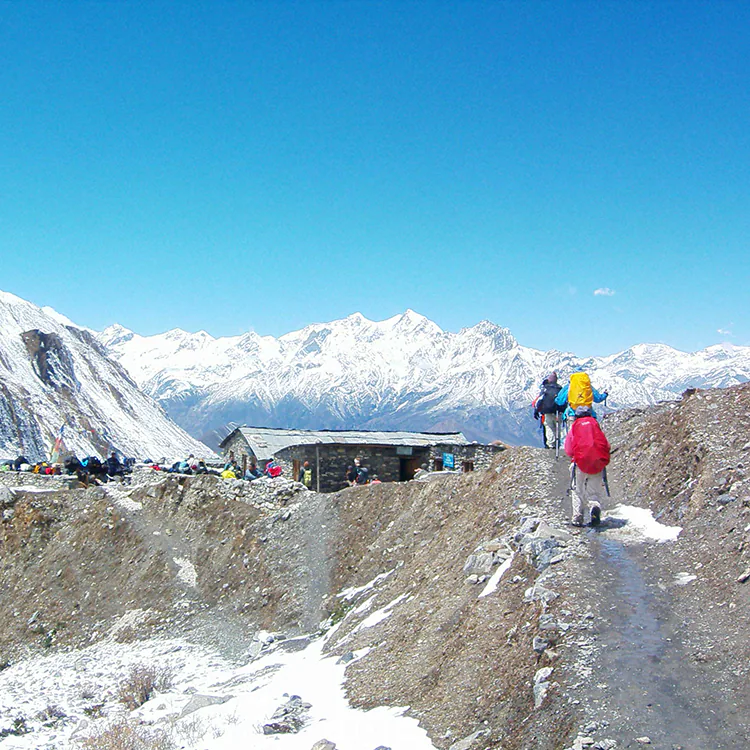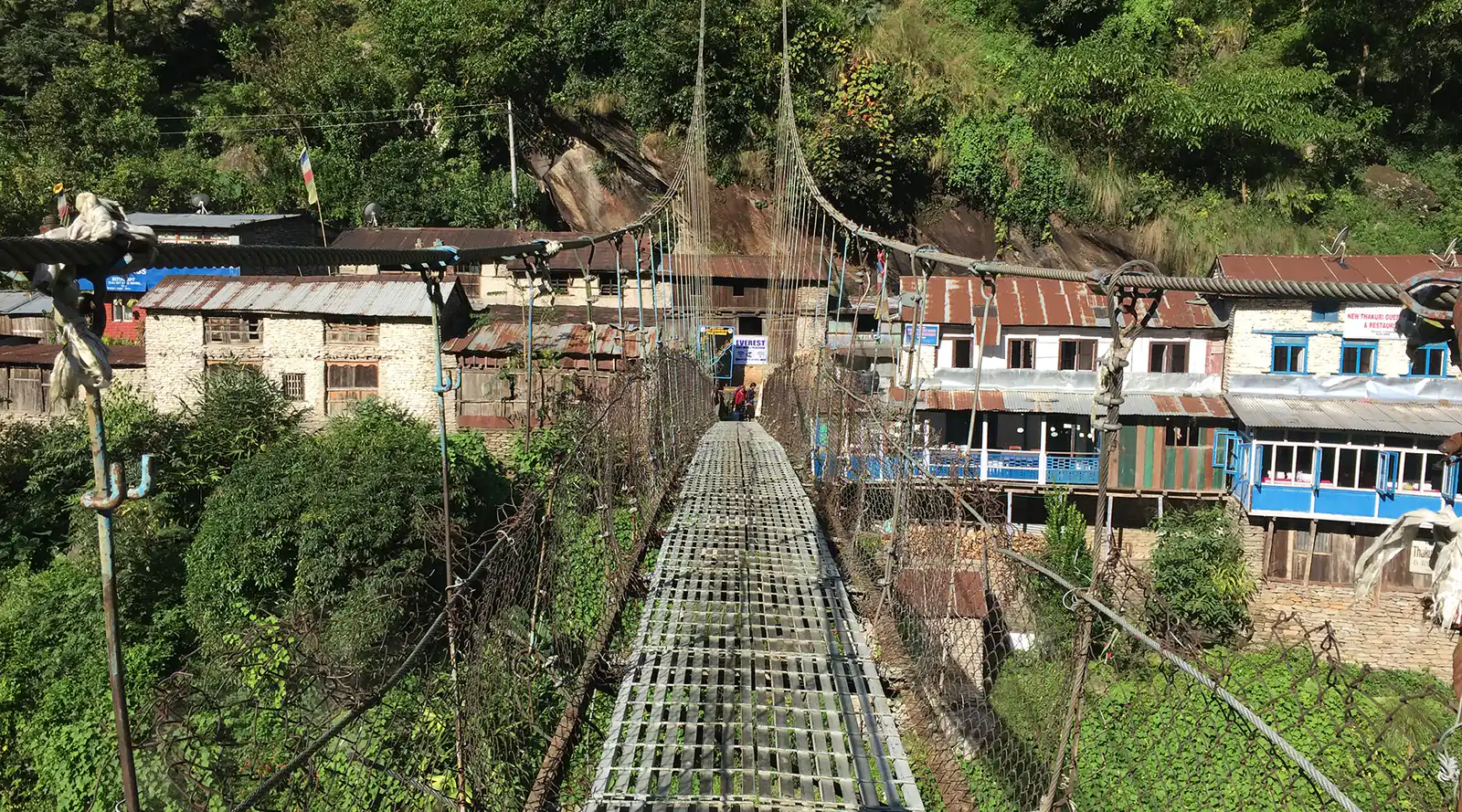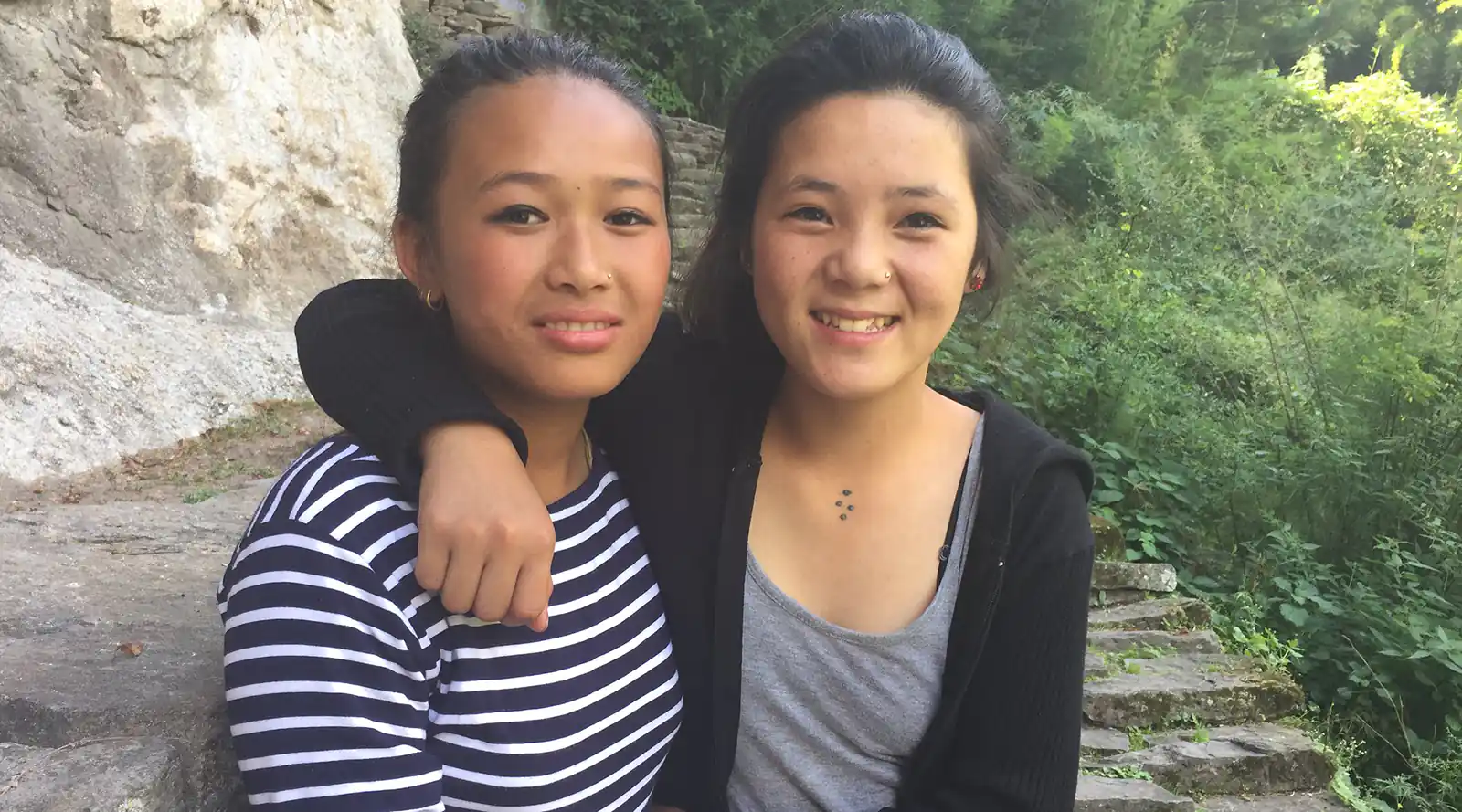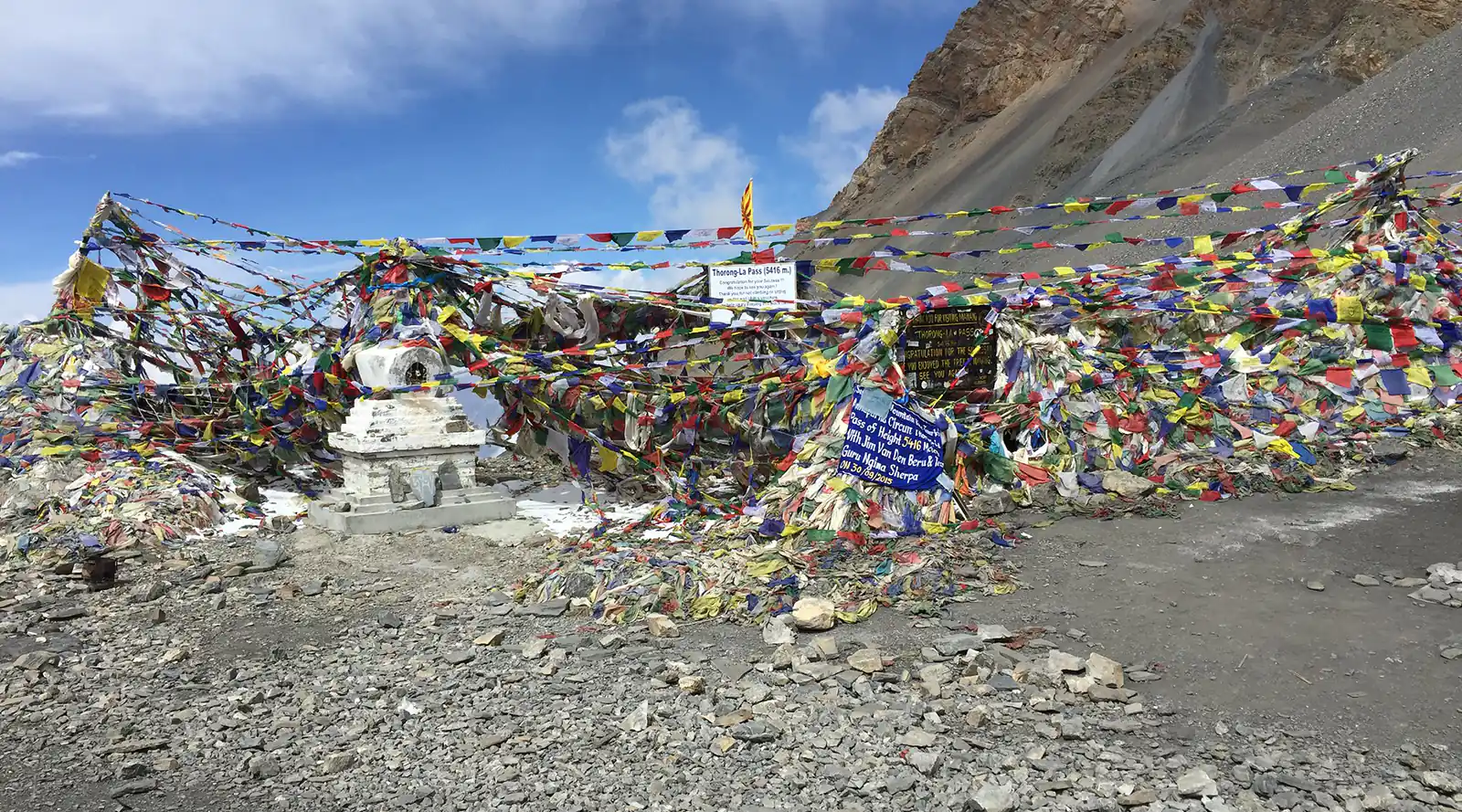Mini Annapurna Circuit Trek
- 14 Breakfast
- 12 Lunch
- 12 Dinner
- Hotel in Kathmandu
- Hotel in Pokhara
- Lodges in Trek
- Trekking
- Sightseeing
- Scenic Drive


Mini Annapurna Circuit Trek lets you take complete advantage of the region as it covers almost the entire Annapurna Circuit Trek; only the dirt road through the Kali Gandaki Valley is avoided. The 18 days Mini Annapurna Circuit Trek is one of the many adventures provided in the Annapurna region. The trail, which started in 1997, is famous for its beautiful scenery, which ranges from Snow-covered peaks to barren, treeless terrain.
As we move up in the counter-clockwise direction from Besishahar to Marshyangdi River, charismatic Himal Chuli and Manaslu attract your attention immediately. Places like Bagarshap (2160m), Chame, Pisang, Yak Kharka, Marpha, Larjung, etc., are a blessing while hiking the long circuit. As you reach the highest point of the Trek, the Thorong La Pass (5416 m high), the spectacular view of the Himalayas entices you ultimately. You will visit Muktinath Temple, the holy place of Hinduism, and take a flight back to Kathmandu via Pokhara.
The Mini Annapurna Circuit Trek provides all the advantages of a complete circuit trek but in much fewer days and an easy trek. This plan is suitable for those adventure travelers who have less time and wants to complete the world’s famous Annapurna Circuit Trek.








After arriving in Kathmandu, a representative from Peregrine Treks will pick us up from the airport and take us to our hotel. In the afternoon, we may take a rest or visit Peregrine Trek’s office. In the evening, a welcome dinner will be hosted by Peregrine Treks. You will be served authentic Nepalese cuisine for dinner, introducing you to the country’s food culture—overnight in Kathmandu.
We leave Kathmandu early in the morning and drive towards Pokhara. After leaving the Kathmandu Valley, the road snakes its way westwards along the Trisuli Valley. We get superb views of the mountains, particularly the Ganesh Himal and Manaslu, as we follow the river to Mugling. We then turn off the main road at Dumre and continue to Besisahar, where we begin our trek.
From Besisahar, we walk down to the river and cross to the east side to avoid the new road currently under construction. Our trail undulates above the river, continuing northwards up the Marsyangdi Valley, with Himalchuli and Peak 29 dominating the horizon. We pass through rice paddies and villages for two hours until we meet the main trail at Bhulebule.
Teahouse
Meals included: Breakfast
The trail continues up the river’s east bank to Ngaddi, where a hydro project is being built. From here, we begin a steady climb through scrub forest, finally arriving at Lampatta, a Manangi village with Tibetan-style prayer flags. A final short sharp ascent brings us to the town of Bahundanda, perched on a ridge at 1,311m. From the ridge, we descend to the river at Syange (1,136m), where we once more cross the river. The trail then follows the river to Jagat.
An undulating trail leads to Chyamje, after which we cross a suspension bridge and climb through an oak forest. The trail then emerges into a level valley where ‘Tal,’ the next village, is situated at the foot of a grand waterfall (1,700m). Crossing the river a couple of times, we reach the village of Dharapani at 1,943m.
Meals included: Breakfast.
Beyond this village, we continue our climb over a spur to Bagarchap, at 2,164m. The name of this village means ‘butcher’s place’ and, although Buddhist, the people of this region hunt animals. Continuing, we follow the trail through the forest to Dhanagyu and climb up to Tamang, where we have lunch with magnificent views of Manaslu and Peak 29. The trail then descends through fir and pine forests to Koto and Chame (2,713m), the administrative center of the Manang district.
Meals included: Breakfast.
We now experience a dramatic change of scenery. Leaving the forests and vegetation of the alpine regions behind, we enter the upper district of Manang, known as Nyeshang. At first, our trail follows the river closely through a deep canyon before coming to Brathang at 2,919m.
The trail then crosses the river and climbs through a deep forest from where the impressive curved rock face of Paungda Danda rises nearly 1,500m from the riverbank to Dukha Pokhari, where we stop for lunch. From here, we take the trail that climbs away from the road track to Upper Pisang village, where we stay for the night. We can visit an impressive monastery in the town in the afternoon.
Meals included: Breakfast.
From Upper Pisang, we take the high-level route to Braga via the villages of Gyaru and Ngawal. This is a beautiful walk with fantastic views across to the Annapurnas. We start with a steep climb up to Gyaru. From here, the trail undulates up the valley with magnificent views across the Annapurnas to Ngawal, where we have lunch. We descend from Ngawal to Mungi and drop down to the main trail just before Braga, a picturesque village dominated by a sizeable ancient gompa. We will stay here for the night and can visit the 500-year-old gompa.
Meals included: Breakfast.
It is a short 2km (1hr) walk on the main trail into Manang, passing some beautifully carved mani walls. We spend this day around Manang, acclimatizing to the altitude. Most people climb the hill behind Manang to enjoy the magnificent views of the Annapurna range and the enormous icefall that crashes and rumbles down from Gangapurna.
This is the trekking part where we are closest to the mountains. Across the valley, the vast bulk of Gangapurna and the Annapurnas tower way above us- the sunset and sunrise over this great theatre is one of the most beautiful mountain views in the country. There is also a chance to walk up to the vast glacial lake below Gangapurna. Manang has many bakeries and coffee shops and is a beautiful place to spend the afternoon.
Teahouse
Meals included: Breakfast
Leaving Manang, we head towards the base of the Thorong La. We climb out of the Marsyangdi Valley and turn northwest up the valley of the Jarsang Khola. We are above the forests now and pass through the dry, alpine country, with scrub juniper and occasional clumps of birch.
We spent tonight at a lodge in Yak Kharka. We will reach the club by lunchtime, and in the afternoon, we will have an acclimatization walk onto the surrounding hills. Look out for the Blue Sheep that inhabit this cold, windy spot.
Meals included: Breakfast.
Another short day to aid acclimatization. The scenery becomes wilder as we continue ascending the valley. At one point, we descend to cross the Jarsang Khola and traverse a scree slope to the lone teahouses at Phedi (4,420m) at the foot of the Thorong La. Thorong Phedi can be very cold and windy. In the afternoon, we can go for a walk up to Thorong High Camp, which is the last lodge and is about an hour above Phedi.
Meals included: Breakfast.
A long day as we leave Phedi early the next morning to climb to the pass. The first part of the ascent is very steep, but it eases somewhat as we approach the top, although the altitude still makes the going tough. Eventually, after numerous false summits, we reach the pass at 5,416m. Ahead there is a magnificent panorama of snow-capped peaks extending northwards into Tibet, and looking back, we can see several of the prominent peaks of Annapurna.
Directly in front of us is the great chasm of the Kali Gandaki, 2,500m. It’s a very long descent that begins gently and becomes steeper as we follow a series of switchbacks down to the grassy slopes before easing off to a gentle descent to Muktinath (3,802m).
Meals included: Breakfast.
From Muktinath, we pass through a landscape of bare, eroded hills with a backdrop of snow-capped high peaks. After visiting the temples, we take an off-the-beaten-track trail uphill for about an hour to a small col with excellent views of Dhaulagiri.
Descending steeply, we come to the isolated village of Lupra with an ancient Bon monastery. After lunch, we follow a fantastic gorge down to the Kali Gandaki Valley. We follow the main trail into Jomsom in the last couple of hours.
Meals included: Breakfast.
The flights from Jomsom to Pokhara are usually in the early morning due to the high winds which blow up the Kali Gandaki Valley later in the day. The short but spectacular flight takes us down the Kali Gandaki Valley with great views of Nilgiri and Dhaulagiri. We fly to Pokhara, where we transfer to a small guesthouse for the night. The rest of the day is free to explore this lakeside resort. You can hire a bike and cycle around the lake, shop, or relax in one of the lakeside cafes.
Please note that flights from Jomsom are dependent on good weather. If the flight from Jomsom is canceled, we will return to Pokhara by road.
Meals included: Breakfast.
We fly to Kathmandu. If the weather is good, there should be good views of the western end of Nepal on this flight. The rest of the day is free to explore Kathmandu. You may wish to visit Durbar Square in the heart of the old city where the old Royal Palace, with its intricate woodcarving, is located. Outside is Kumari Chowk, home of the Kumari, the young girl revered as a living goddess.
You may wish to visit the monkey temple at Swayambhunath, one of the largest Buddhist Stupas in the world at Bodnath, or the most important Hindu temple in the valley at Pashupatinath. Various sightseeing tours can be booked and paid for locally at the hotel in Kathmandu. For details, see the Optional Excursions section. (Occasionally, it may not be possible to fly, in which case we return to Kathmandu by road, arriving in the evening).
Meals included: Breakfast.
Our journey in Nepal comes to an end today! A Peregrine Treks representative will drop us off at the airport approximately 3 hours before our scheduled flight. On our way home, we have plenty of time to plan our next adventure in the beautiful country of Nepal.
We will be accommodated in 3-star hotels in Kathmandu and Pokhara; and teahouses during the trek. We will stay at Samsara Resort or a similar hotel in Kathmandu and Kuti Resort or a similar hotel in Pokhara. All accommodations are on a twin-shared basis. A single supplement will be served on request and will cost an additional USD 260. Peregrine Treks will arrange rooms with attached washrooms; however, teahouses in some places only have shared washing and toilet facilities. Also, note that single rooms are readily available in Kathmandu, Pokhara, and the trekking regions at lower elevations, but it might be challenging to find them at higher elevations.
During our trek, we can enjoy authentic Nepalese food and the more common international cuisine (Tibetan, Continental, Italian, Indian, etc.). Breakfast and dinner will be provided from the teahouse or from a lodge menu where we spend the night, whereas lunch will be provided on the way to the next destination. All meals, including breakfast, lunch, and dinner, will be provided during trekking, while only breakfast will be available in Kathmandu and Pokhara. There will also be welcome and farewell dinners.
This moderate trek is suitable for passionate walkers who can walk at least 5-7 hours daily with a light day pack. Walking in higher altitudes is more physically demanding than walking in lower altitudes; however, if we are in excellent health with average physical fitness and have a positive attitude, self-confidence, and strong determination, we can accomplish this trek.
We are exercising and jogging regularly for weeks before the trip is an excellent idea to enhance our strength and stability. Past hiking experience would be an asset, but no technical skill is required for this trip. It is vital for participants with pre-existing medical conditions such as heart, lung, and blood diseases to consult their doctor before taking the trip. Before booking the trek, you are also advised to inform Peregrine Treks of any conditions.
Autumn (Sept. to Nov.) and Spring (March to May) are the best seasons for trekking in the Annapurna region. The weather is sunny and warm with outstanding views. If you wish to avoid crowds and enjoy some alone time with nature, then taking this trip during winter (Dec., Jan., Feb.) could also be an option. However, the temperature during winter could be harsh for most guests. Trekking in the summer or monsoon season (June to Aug.) will be affected by rain, but the Summer trek could be a boon for a keen botanist.
